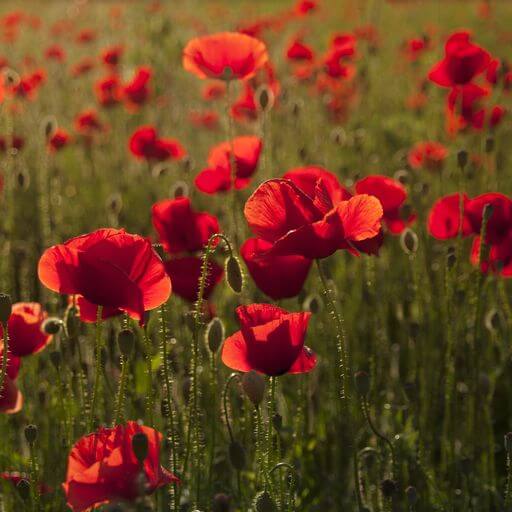
Tales of soldiers from our Battlefields tours
Meet the heroes of WWI
The devastating period of WWI led to many heroic victories, many lives lost and an insurmountable pride which reigns through nations across the world.
If you have an ancestor who served in the Great War and you are interested in seeing where they fought for their country, one of our Battlefields tours is an exemplary way to pay tribute to their legacy, learn about your family history and honour the catastrophic loss of life.
Intrigued to hear more about the Australian soldiers of WW1 and the legacies they’ve left trailing in their wake upon the once-scorched plains of French and Belgian countryside? Prepare to be amazed by the bravery, dedication and humanity of those who served during WW1.
Sir John Monash

General Sir John Monash was a military hero who commanded the Australian Corps on the Western Front. His motto was ‘Feed your troops on victory’ and his ingenuity led to the utmost respect from his own soldiers and British allies alike. Moreover, it is said that his strategy made an incredible impact in favour of the Allies in the summer of 1918. Undoubtedly, this is one of the reasons why Sir John Monash was famous in the world of warfare. His achievements continued throughout his legacy which lives on in the Sir John Monash Centre in Somme, an interactive museum dedicated to the lives and work of Australian servicemen and women who served throughout WWI. During our ANZAC on the Western Front tour, we’ll spend some time here. As we delve deeper into the tales of heroes like Sir John Monash, we’ll learn of the sacrifices made and the comradery between soldiers to boost morale during a time of devastation.
General Birdwood
Lieutenant General Sir William Birdwood, a British officer, was commander to the ANZAC forces throughout the Great War. He began his commandment on Gallipoli (Gelibolu in modern Turkey) in 1914 (the location which inspired the Anzac legend), then continued to lead the Australian and New Zealand troops in France and Belgium. General Birdwood worked hard to successfully gain the respect of his soldiers, leading to affectionate nicknames such as ‘Birdie’ and ‘the spirit of the ANZAC’. During his 1920 tour of Australia, veterans warmly welcomed him to their home.
Everyday Heroes

Whilst we celebrate the lives of the generals who led soldiers into battle with honour, bravery and intelligence, it is important to share the stories of the everyday heroes who left the shores of Australia and journeyed far to protect their home. During our Battlefields tours, we’ll visit the resting places of many fallen Australian soldiers of WW1. At these poignant places in Belgium and France, we’ll learn the experiences of ANZAC soldiers during WW1 from our expert guide, including tales of Victoria Cross recipients and underage Australian soldiers. If you wish to take part in a momentous day of remembrance and pride, you have the unique opportunity to attend the ANZAC Day Service in Villers-Bretonneux on this tour. The memorial site is dedicated to the burials of more than 2,100 servicemen, including 770 WW1 Australian soldiers.
Christmas Truce of 1914
On the eve of the 25 December 1914, after months of war, there was an unsanctioned ceasefire across the Western Front. Soldiers from the German and Allied trenches met in the middle of the battlefield where nothing but the murmurs of halted English and the lack of gunshots sounded. There, men exchanged small gifts, socialized with one another, shared food and drink and played games of football. It was also a short period in which each army could bury their dead and rebuild their trenches with the ominous knowledge that the war was not yet over. In one remarkable night, enemies of war became acquaintances for the sake of the festive holiday. This occasion became known as the Christmas Truce of 1914, representing the trust and humanity of the frontline heroes, many of whom were simply men far from home. Many parts of the Western Front held the short alliance until New Year’s Day. However, the truce was never resurrected and violence continued until the end of the war in 1918.
Take in the atmospheric ambience of the sorrowful land on one of our Battlefields small group tours and return home with an enormous sense of pride.



